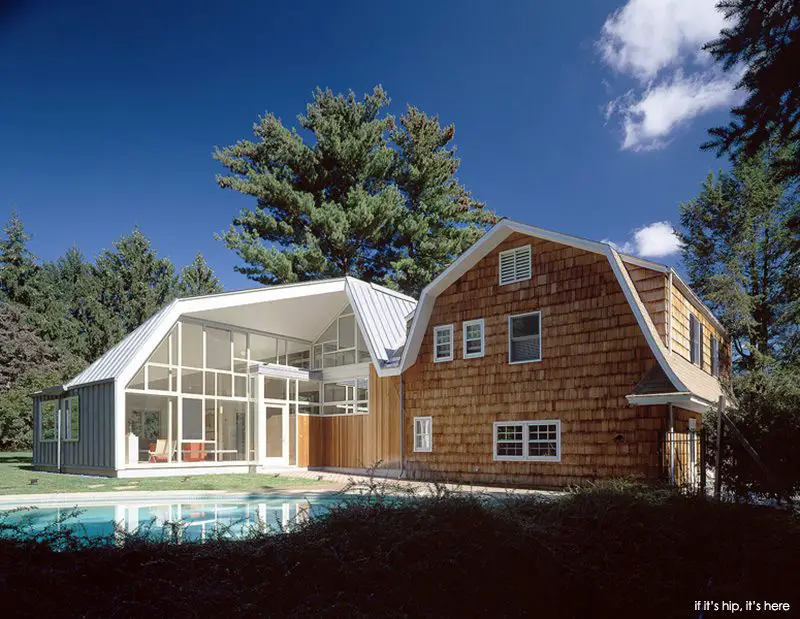The Athanassiades Residence in New Jersey is a lovely farmhouse with a modern addition by architect David Hotson.
New Jersey Farmhouse Addition

Hotson has been receiving a lot of press and awards recently for his wild modernist Skyhouse with it’s spiral interior slide. (below)

above: David’s Skyhouse features a tubular stainless steel slide that winds throughout the multiple levels of the home
But the architect has several other projects to his credit – mostly townhouses, duplexes, lofts and apartments. I found his addition to a New Jersey farmhouse, known as The Athanassiades Residence, a house in Princeton, a lovely example of functional architecture that is a modern reflection of the original structure and a smart use of space.

Below is how the architect describes the project:
“In order to take greater advantage of their spacious rear yard and existing swimming pool, the owners of this three-bedroom, split-level house wished to renovate the existing Kitchen and Dining Room and add a new Living Room to the rear of the house.


The design of the addition abandons both the doctrinaire modernist practice of making a clear separation between traditional house and modern addition and the post-modernist strategy of directly mimicking the original building. Instead the original house transforms into a distorted reflection of itself.


The addition has a deceptively simple, rectilinear plan. At roof level, however, the forms break out of the orthogonal. Three parallel steel beams skew vertically and horizontally across the addition to their points of intersection with the original house.

The white painted wood eave trim of the existing gambrel roof–which is the strongest feature of the original house—follows the skewed geometry of these beams into the addition. The eave line first folds up in a mirror image of the original roofline, and then skews in plan and section to create edge of the open, asymmetrically folded volume of the new Living Room.
The faceted roofline allows the formerly dark attic area above the Kitchen and Dining Room to be opened to the rear yard and to the Dining and Family Rooms below.

Continuous lead-coated copper cladding folds off the original house, over the ridges and valleys framed by the parallel beams, and down over the perimeter walls to grade level.

On the facades, the original cedar shingles give way to vertical cedar siding at the zone where new merges with old, and this gives way to steel sash windows and metal siding as the new enclosure folds away form the original house. The precise point where old and new construction meet is blurred. The result of this design strategy is a grafted, mutated, hybrid extrapolation of the familiar forms of the original building.” — David Hotson
